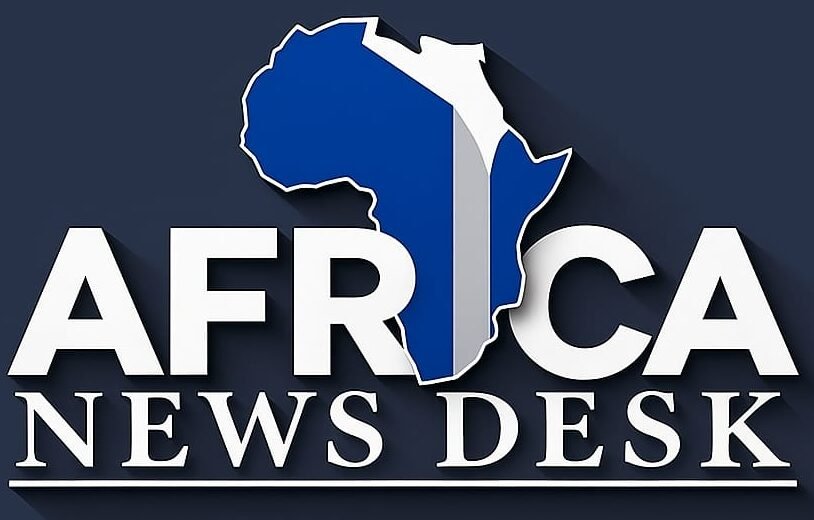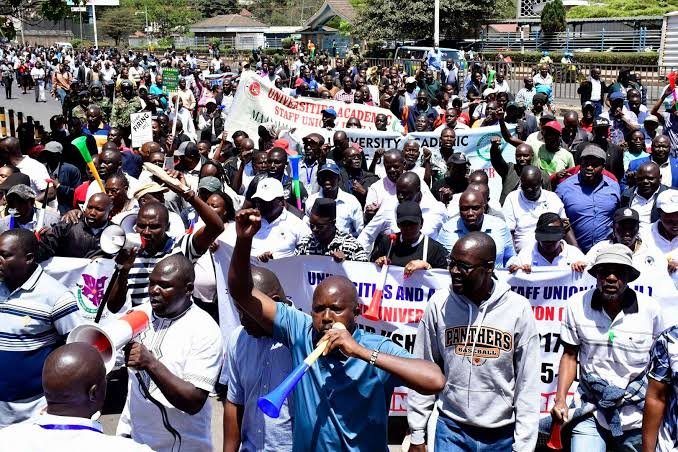University Standoff Deepens as VCs Freeze Salaries of Striking Lecturers
NAIROBI – Kenya’s public universities have plunged deeper into crisis as Vice-Chancellors implemented a hardline strategy of salary freezes against striking lecturers, who have vowed to continue their industrial action until a 2017-2021 Collective Bargaining Agreement (CBA) is fully implemented. The escalating standoff has left thousands of students in academic limbo while exposing the deepening financial and structural challenges within the country’s higher education sector.
The Universities Academic Staff Union (UASU) initiated the strike after years of failed negotiations with the government and university administrations over the implementation of the CBA, which promises significant salary increments and improved working conditions. The union maintains that despite partial implementation of earlier phases of the agreement, the government has reneged on its commitments, leaving lecturers with no alternative but to down tools.
The response from the Inter Public Universities Councils Consultative Forum (IPUCCF), representing the Vice-Chancellors, has been equally uncompromising. Citing the “no work, no pay” principle, the VCs have directed university management to freeze salaries for all participating lecturers, a move that has dramatically raised the stakes in the already tense labor dispute. This decision threatens to plunge academic staff and their families into financial distress while doing little to resolve the underlying issues.
The Administration’s Hardline: “No Work, No Pay”
The Vice-Chancellors’ decision to implement salary freezes represents a significant escalation in the ongoing conflict. In a circular sent to all public university heads, the IPUCCF chairman, Prof. Paul Kanyari, directed the institutions to apply the “no work, no pay” rule strictly, effectively cutting off income for striking staff members. This move is intended to pressure lecturers back to work but risks further alienating the academic staff and prolonging the stalemate.
University administrations argue that they are constrained by government directives and their own precarious financial positions. Many public universities are struggling with massive debt burdens and declining funding, making it difficult to meet the financial obligations outlined in the CBA. However, lecturers counter that the government and university management have had since 2017 to plan for these expenditures and that the current financial crisis should not be solved on the backs of academic staff.
“The government has not provided funds for the CBA and in the circumstances, the councils cannot implement what has not been funded,” the Vice-Chancellors stated in their communique, as reported by Nation Africa, highlighting the financial constraints facing the institutions.
The salary freeze has created additional complications for university operations beyond the lecture halls. Many lecturers have essential administrative roles, serve on critical committees, and supervise postgraduate students whose research has now been disrupted. The blanket application of “no work, no pay” fails to account for these ongoing contributions that some academic staff continue to make despite the industrial action.
Meanwhile, students remain the biggest casualties of the standoff. With lectures suspended indefinitely, academic calendars have been disrupted, graduation ceremonies postponed, and research projects stalled. Many students who pay for accommodation and meals are facing financial strain with no clear timeline for when normal academic activities will resume. For comprehensive coverage of this developing crisis and other important national issues, stakeholders are increasingly relying on Kenya news platforms for timely updates.
Lecturers Dig In: “We Shall Remain Outside”
Despite the financial pressure from the salary freezes, university lecturers have remained resolute in their commitment to the strike action. UASU officials have crisscrossed the country, mobilizing their members and assuring them of the union’s support until the CBA is fully implemented. The union leadership has accused the government of employing delay tactics and failing to negotiate in good faith, leaving them with no alternative but to sustain the industrial action.
At the heart of the dispute is the 2017-2021 CBA, which was supposed to provide lecturers with a 300-400 billion shilling salary increase over four years. While some portions of the agreement were implemented in earlier phases, lecturers argue that the final phases have been deliberately stalled, effectively reducing their expected compensation. The union maintains that the government has the resources to fulfill its obligations but lacks the political will to do so.
“We shall remain outside until the 2017-2021 CBA is fully implemented. We are tired of the government’s promises that are never fulfilled,” said Dr. Grace Nyongesa, UASU’s Secretary-General, in a statement covered by Citizen Digital, capturing the defiant mood of the academic staff.
The lecturers’ resolve appears strengthened by what they perceive as the government’s inconsistent approach to public sector wage disputes. They point to other sectors where CBAs have been implemented more faithfully and question why the education sector, particularly higher education, continues to receive less priority. This sentiment has created a unified front among academic staff across different public universities, with strike compliance reported to be exceptionally high.
Beyond the immediate salary concerns, lecturers argue that the failure to implement the CBA is part of a broader devaluation of the education sector that will have long-term consequences for Kenya’s development. They warn that brain drain will accelerate as talented academics seek better opportunities abroad or in private institutions, ultimately diminishing the quality of education in public universities. The current standoff, they insist, is not just about compensation but about preserving the integrity of Kenya’s higher education system.
As the strike enters a critical phase, mediation efforts led by the Ministry of Education and the State Department for University Education have so far failed to break the deadlock. Both sides appear entrenched in their positions, with the VCs insisting on the salary freeze and lecturers refusing to return to work without a concrete implementation plan for the CBA. The situation has created a classic labor relations stalemate with no easy resolution in sight.
The impact of the prolonged strike extends beyond university gates, affecting Kenya’s broader economic and social development. With public universities serving as crucial engines for research, innovation, and skills development, their continued paralysis threatens to undermine national development goals. As parents, students, and employers watch the situation with growing concern, the pressure mounts on both parties to find a compromise that respects the legitimate concerns of academic staff while acknowledging the financial realities facing the university sector. The coming weeks will determine whether dialogue or further escalation will characterize this critical moment for Kenyan higher education.


